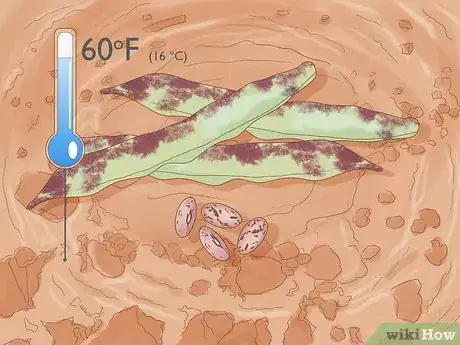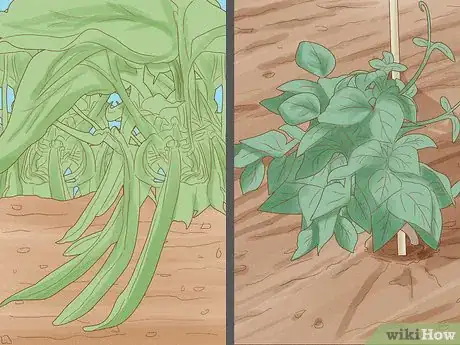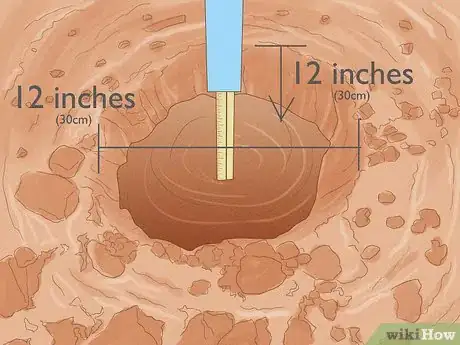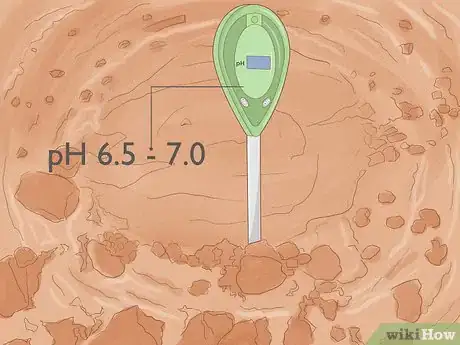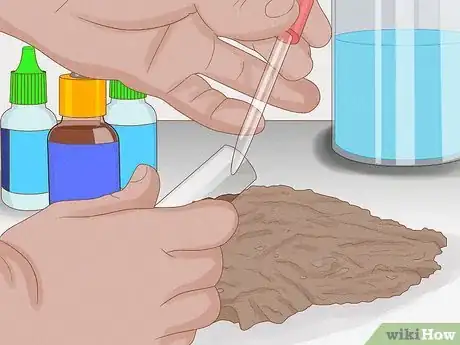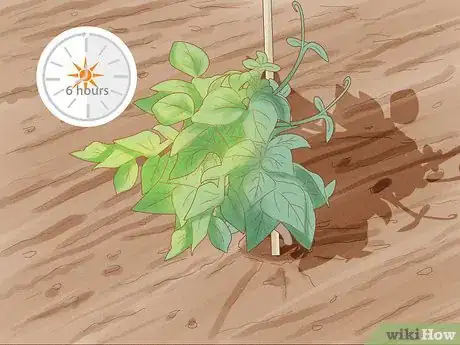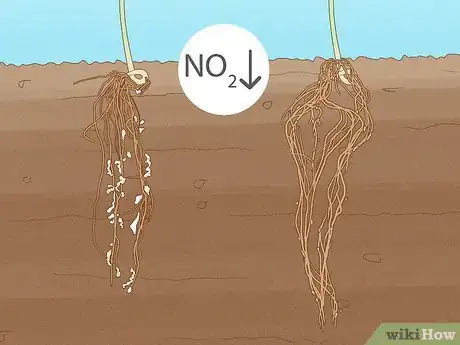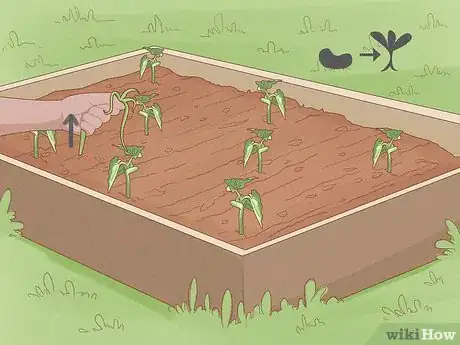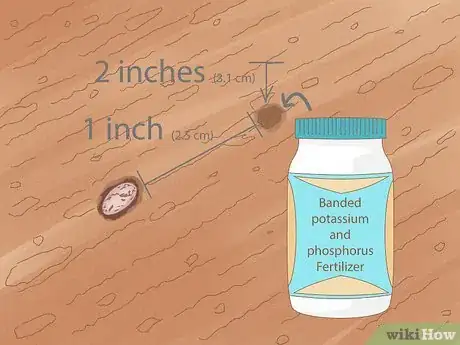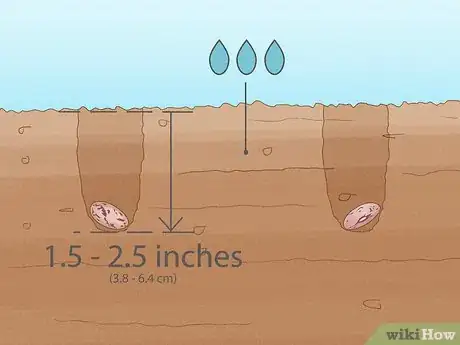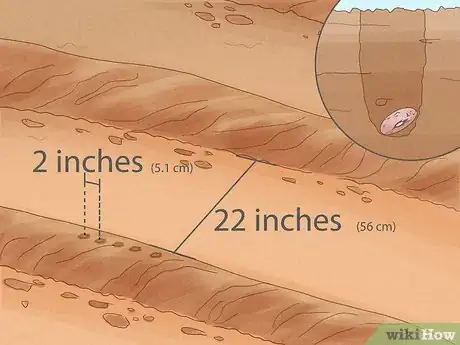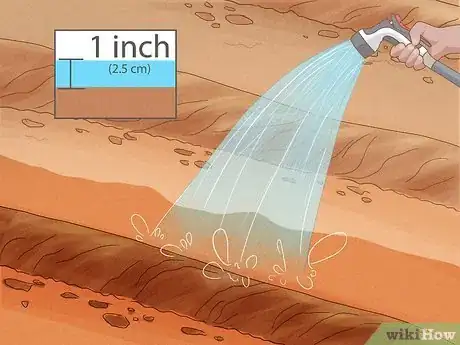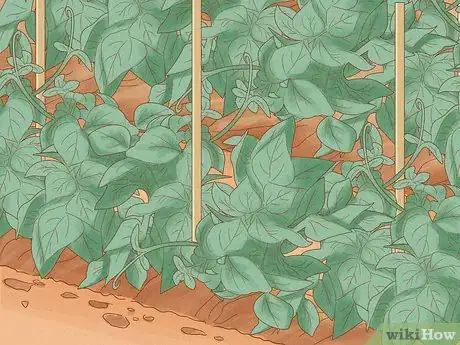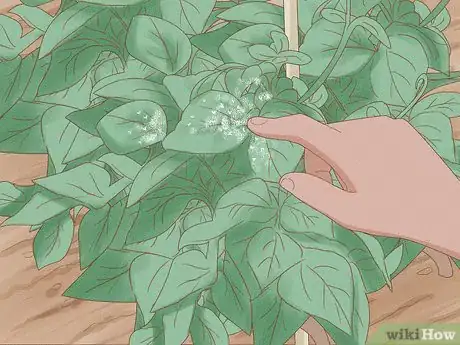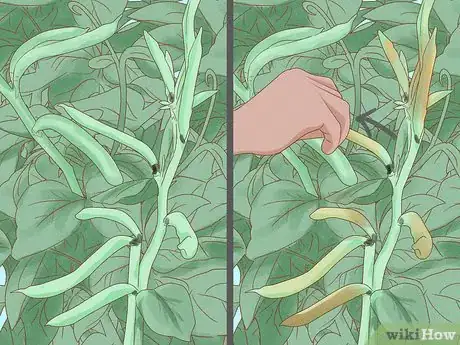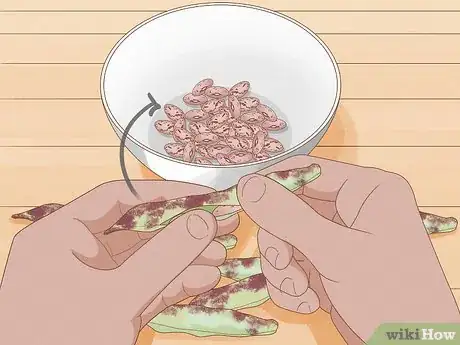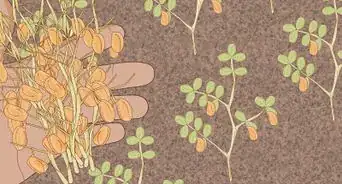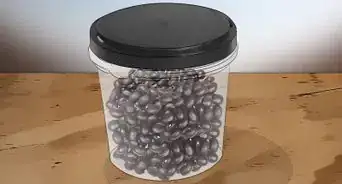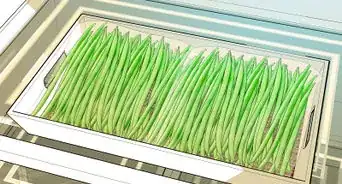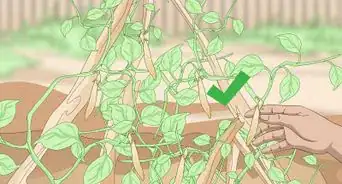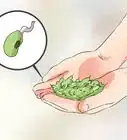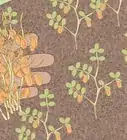This article was co-authored by wikiHow staff writer, Jennifer Mueller, JD. Jennifer Mueller is a wikiHow Content Creator. She specializes in reviewing, fact-checking, and evaluating wikiHow's content to ensure thoroughness and accuracy. Jennifer holds a JD from Indiana University Maurer School of Law in 2006.
There are 15 references cited in this article, which can be found at the bottom of the page.
This article has been viewed 49,254 times.
Learn more...
Since pinto beans were originally domesticated in Central and South America, they're best grown throughout the Americas in relatively warm climates.[1] While most pinto beans are grown in larger tracts on farms, they don't need a lot of space. Just a few plants will produce a high yield, so they're suitable for smaller gardens.[2] Here, we've gathered information on how to grow pinto beans that will take you from planting to harvest.
Steps
Community Q&A
-
QuestionWhat is the eye of a pinto bean?
 wikiHow Staff EditorThis answer was written by one of our trained team of researchers who validated it for accuracy and comprehensiveness.
wikiHow Staff EditorThis answer was written by one of our trained team of researchers who validated it for accuracy and comprehensiveness.
Staff Answer wikiHow Staff EditorStaff AnswerThe eye of the pinto bean will be a small spot, either white or a lighter color than the rest of the bean, on the side of the bean roughly in the middle. The shape is vaguely like the shape of a human eye.
wikiHow Staff EditorStaff AnswerThe eye of the pinto bean will be a small spot, either white or a lighter color than the rest of the bean, on the side of the bean roughly in the middle. The shape is vaguely like the shape of a human eye. -
QuestionDo pinto beans do well in tropical climates?
 wikiHow Staff EditorThis answer was written by one of our trained team of researchers who validated it for accuracy and comprehensiveness.
wikiHow Staff EditorThis answer was written by one of our trained team of researchers who validated it for accuracy and comprehensiveness.
Staff Answer wikiHow Staff EditorStaff AnswerSince pinto beans were first domesticated in Central and South America, they are native to tropical climates. However, in a particularly humid environment, they do require drainage to ensure they don't get too much moisture. They also don't do well in the heat, but as soon as the weather cools they should perk right back up.
wikiHow Staff EditorStaff AnswerSince pinto beans were first domesticated in Central and South America, they are native to tropical climates. However, in a particularly humid environment, they do require drainage to ensure they don't get too much moisture. They also don't do well in the heat, but as soon as the weather cools they should perk right back up. -
QuestionWill adding harmonies help the pinto beans grow?
 Community AnswerHarmonies will not help pinto beans grow.
Community AnswerHarmonies will not help pinto beans grow.
Warnings
- Pinto beans are extremely vulnerable to weeds. Avoid planting them in fields that have been thick with weeds, as the problem might become impossible to control.[39]⧼thumbs_response⧽
References
- ↑ https://hort.purdue.edu/newcrop/articles/ji-beans.html
- ↑ https://aces.nmsu.edu/pubs/_circulars/CR457/welcome.html
- ↑ https://aggie-horticulture.tamu.edu/extension/beans/pintobeans/pintobeans.html
- ↑ https://youtu.be/c8aGx3E0VbM?t=27
- ↑ https://www.ag.ndsu.edu/publications/crops/dry-bean-production-guide
- ↑ https://s3.wp.wsu.edu/uploads/sites/2073/2014/03/Dried-Beans-Colorful-Nutritious-Easy-To-Grow.pdf
- ↑ https://extension.tennessee.edu/Williamson/Horticulture/Consumer%20Horticulture/DIY%20Soil%20Drainage%20Perk%20Test%20for%20Your%20Yard%20(2016).pdf
- ↑ https://hort.purdue.edu/newcrop/articles/ji-beans.html
- ↑ https://hgic.clemson.edu/factsheet/changing-the-ph-of-your-soil/
- ↑ https://assets.adm.com/Products-And-Services/Food-Ingredients/Edible-Beans/Handbook_for_Better_Edible_Bean_Production_2017_ed.pdf
- ↑ https://extension.umaine.edu/publications/2286e/
- ↑ https://assets.adm.com/Products-And-Services/Food-Ingredients/Edible-Beans/Handbook_for_Better_Edible_Bean_Production_2017_ed.pdf
- ↑ https://aces.nmsu.edu/pubs/_circulars/CR457/welcome.html
- ↑ https://s3.wp.wsu.edu/uploads/sites/2073/2014/03/Dried-Beans-Colorful-Nutritious-Easy-To-Grow.pdf
- ↑ https://s3.wp.wsu.edu/uploads/sites/2073/2014/03/Dried-Beans-Colorful-Nutritious-Easy-To-Grow.pdf
- ↑ https://www.ag.ndsu.edu/publications/crops/fertilizing-pinto-navy-and-other-dry-edible-bean
- ↑ https://aggie-horticulture.tamu.edu/extension/beans/pintobeans/pintobeans.html
- ↑ https://assets.adm.com/Products-And-Services/Food-Ingredients/Edible-Beans/Handbook_for_Better_Edible_Bean_Production_2017_ed.pdf
- ↑ https://assets.adm.com/Products-And-Services/Food-Ingredients/Edible-Beans/Handbook_for_Better_Edible_Bean_Production_2017_ed.pdf
- ↑ https://www.ag.ndsu.edu/crops/dry-bean-articles/stages-of-development
- ↑ https://hort.purdue.edu/newcrop/articles/ji-beans.html
- ↑ https://www.ag.ndsu.edu/publications/crops/fertilizing-pinto-navy-and-other-dry-edible-bean
- ↑ https://www.ag.ndsu.edu/cpr/plant-science/dry-bean-seeding-rates-05-29-14
- ↑ https://repository.arizona.edu/bitstream/handle/10150/200607/370054-101-102.pdf?sequence=1&isAllowed=y
- ↑ https://s3.wp.wsu.edu/uploads/sites/2073/2014/03/Dried-Beans-Colorful-Nutritious-Easy-To-Grow.pdf
- ↑ https://extension.umn.edu/vegetables/growing-beans
- ↑ https://aggie-horticulture.tamu.edu/extension/beans/pintobeans/pintobeans.html
- ↑ https://s3.wp.wsu.edu/uploads/sites/2073/2014/03/Dried-Beans-Colorful-Nutritious-Easy-To-Grow.pdf
- ↑ https://s3.wp.wsu.edu/uploads/sites/2073/2014/03/Dried-Beans-Colorful-Nutritious-Easy-To-Grow.pdf
- ↑ https://aces.nmsu.edu/pubs/_circulars/CR457/welcome.html
- ↑ https://extension.umn.edu/vegetables/growing-beans
- ↑ https://hort.purdue.edu/newcrop/articles/ji-beans.html
- ↑ https://repository.arizona.edu/bitstream/handle/10150/200607/370054-101-102.pdf?sequence=1&isAllowed=y
- ↑ https://aces.nmsu.edu/pubs/_circulars/CR457/welcome.html
- ↑ https://hort.purdue.edu/newcrop/articles/ji-beans.html
- ↑ https://extension.umn.edu/vegetables/growing-beans
- ↑ https://s3.wp.wsu.edu/uploads/sites/2073/2014/03/Dried-Beans-Colorful-Nutritious-Easy-To-Grow.pdf
- ↑ https://aces.nmsu.edu/pubs/_circulars/CR457/welcome.html
- ↑ https://repository.arizona.edu/bitstream/handle/10150/200607/370054-101-102.pdf?sequence=1&isAllowed=y
About This Article
To grow pinto beans, start by planting them in the spring in a sunny, outdoor area. Then, once the seedlings sprout, thin them out so there's about 6 inches of space between each one. Next, continue to water the beans whenever the soil dries out, and apply a fertilizer that's rich in phosphorous and potassium halfway through the growing season. Finally, harvest the beans after 90-150 days, or whenever they dry out. For tips on how to harvest your pinto beans, scroll down!
